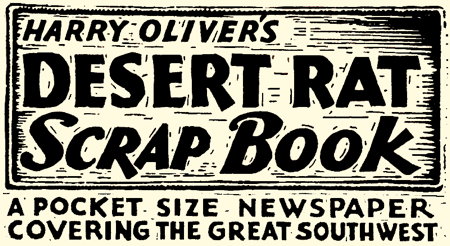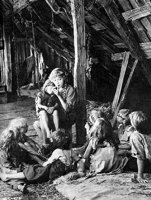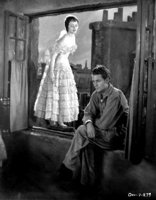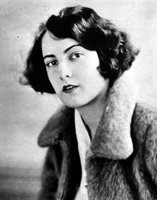BACK HOME THIS IS HISTORICAL INFORMATION ONLY
|
Excerpt from a 1999 |

|
CLICK AN IMAGE TO ENLARGE
|
THE EXCERPT |
|
Date: Wed, 24 Feb 1999 01:47:12 -0800 From: Robert Birchard Subject: Re: Pickford movie with immobile sheep sdavies wrote: > I apologize if I've told this secondhand anecdote before. Richard K., > the shepherd, will remember if I have. > > During a Mary Pickford movie shoot, a scene was required where Mary > sat in a barn and a pastoral scene was visible outside the doors. > Unfortunately, the movie crew could not get the sheep to stay put > in the background; they kept wandering out of shot. The crew could > not tether the sheep without being obvious. > > The solution seems a beautiful example of Hollywood excess. The crew > rebuilt the barn on high stilts, created little islands of grass up > on poles outside the barn doors and placed the sheep on them, via a > ladder. The sheep stayed put, well within frame, for the duration of > the shooting. > > There's pictures of this in Kevin Brownlow's _The parade's gone by_, > (1968) (which my library seems to have considered a book too old to > keep!!!!) > > Stephen D Stephen,
Don't know if you'd call it Hollywood excess. The Art Director on SPARROWS (1926) was Harry Oliver who was noted for his atmospheric settings and controlled environments. In fact the German expressionist learned a bit from Harry Oliver (and not the other way around). One of Oliver's specialties was recreating really believeable exterior locations on the back lot — New England snow scenes on a Culver City lot in the middle of summer for THE FACE OF THE WORLD (1921), the back streets of Paris for 7th HEAVEN (1927), and even an entire swamp for SPARROWS, which one would swear was a Louisiana location.
Oliver's lasting monument (although it is periodically threatened) is the famed "Witch House" in Beverly Hills, which was originally built as the administration building of the Willat Studio in Culver City in 1921 and later moved to its present location after the studio closed.
Oliver got fed up with Hollywood after sound came in and retired to the desert where he periodically published "Harry Oliver's DESERT RAT SCRAP BOOK" for a number of years.
—Bob Birchard |


